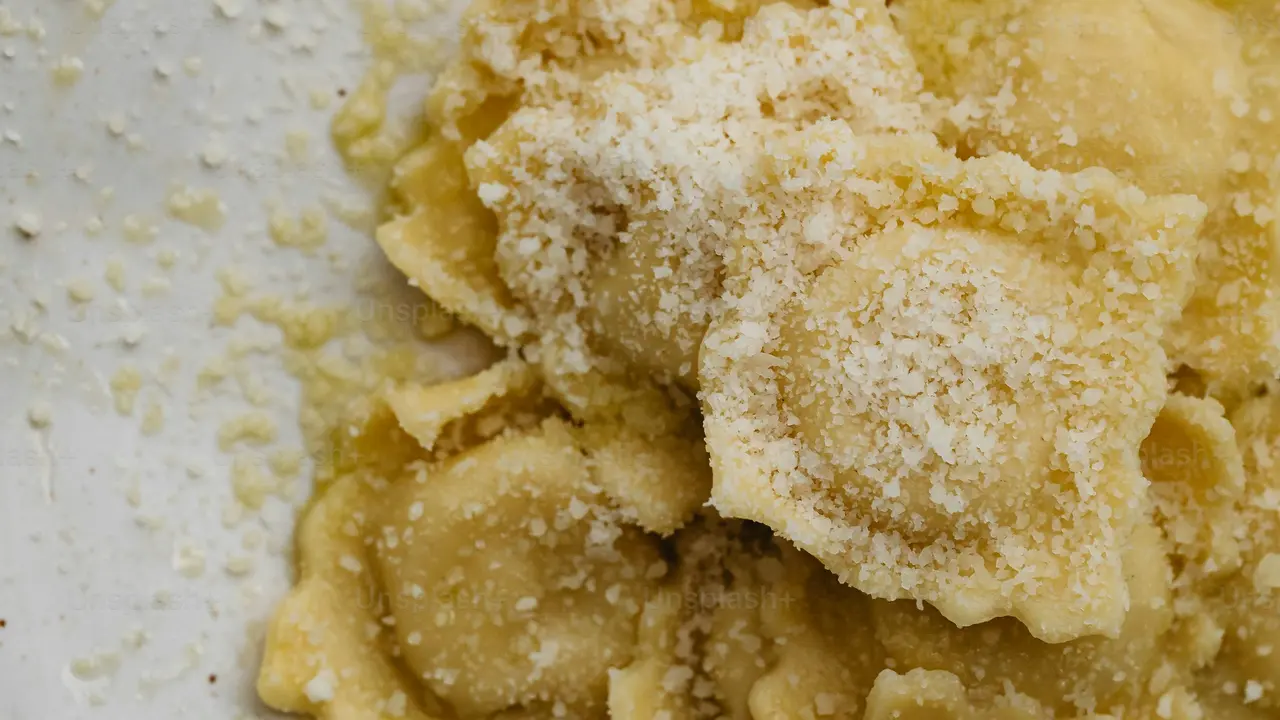Affogato: The Simple and Delicious Italian Dessert

meta_description: Coffee pod machines offer convenience, but how does the coffee quality compare? We weigh the pros and cons of pod machines, considering ease of use, cost, and environmental impact. Make an informed decision.
The Allure of Coffee Pods: Unpacking the Convenience of Single-Serve Coffee Makers
Let’s face it, mornings can be chaotic. The snooze button gets a workout, and suddenly you're scrambling to get out the door. In this whirlwind, the idea of grinding beans, measuring coffee, and meticulously brewing a pot can feel like a Herculean task. That's where coffee pod machines swoop in to save the day. Their primary draw is unparalleled convenience. Pop in a pod, press a button, and boom – a cup of coffee is ready in seconds. No mess, no fuss, and consistently the same result every time. This simplicity makes them incredibly attractive for individuals, small offices, or anyone who values speed and ease of use above all else. Think of it as the fast food of the coffee world – quick, reliable, and satisfies the immediate craving.
But the convenience factor extends beyond just the brewing process. Cleaning is a breeze, often involving just emptying a used pod receptacle. The machines themselves are typically compact, fitting comfortably on countertops without taking up too much space. And because they brew single servings, there's no wasted coffee sitting around getting stale. This is a huge plus for solo coffee drinkers who previously had to commit to brewing a whole pot, even if they only wanted one cup. The appeal is clear: coffee pod machines effortlessly integrate into busy lifestyles, offering a streamlined and efficient way to enjoy a daily caffeine fix.
Coffee Quality Unveiled: Exploring the Taste Limitations of Single-Serve Coffee
While convenience is king with coffee pod machines, the quality of the resulting brew is a subject of much debate. The inherent limitations of the pod system can impact the final taste and aroma. Pre-ground coffee, the standard in most pods, starts to lose its flavor almost immediately after grinding. Exposure to oxygen degrades the volatile compounds that contribute to the rich, complex taste we associate with freshly brewed coffee. While manufacturers take steps to mitigate this, such as nitrogen flushing and airtight packaging, the coffee in a pod will never be as vibrant as a cup brewed from freshly ground beans.
Furthermore, the brewing process in many pod machines is often optimized for speed rather than extraction. The water temperature and brew time may not be ideal for fully extracting the flavor from the coffee grounds. This can result in a weaker, less nuanced cup. The consistency of the grind itself can also be a factor. Pre-ground coffee is often a coarser grind, which may not be suitable for all brewing methods. All of these factors contribute to a coffee experience that, while convenient, often falls short of the quality offered by traditional brewing methods like pour-over, French press, or even a well-maintained drip coffee maker. For serious coffee aficionados, the trade-off between convenience and taste may be too significant to ignore.
Cost Analysis: Pod Coffee vs Traditional Brewing Methods - Calculating the Long-Term Expenses
The initial investment in a coffee pod machine is often relatively low, making it an attractive option for budget-conscious consumers. However, the long-term cost of using these machines can be significantly higher than traditional brewing methods. The recurring expense of purchasing coffee pods quickly adds up, especially for regular coffee drinkers. Pod prices can range from $0.50 to over $1.00 per pod, depending on the brand and type of coffee. In contrast, a pound of high-quality whole bean coffee, which can yield dozens of cups, can be purchased for a similar price.
Let's do some quick math. If you drink one cup of coffee per day using a pod machine at $0.75 per pod, you're spending approximately $274 per year on coffee. If you drink two cups a day, that's $548. A pound of good quality coffee beans might cost $15 and yield 60 cups of coffee. That means you're spending $0.25 per cup, or $91.25 per year for one cup a day. The savings with whole bean coffee become even more substantial when brewing for multiple people. While the upfront cost of a grinder and a traditional brewing device might be higher, the long-term savings and improved coffee quality often justify the investment for serious coffee drinkers.
Beyond the cost of the coffee itself, consider the environmental impact of single-use pods. The vast majority of coffee pods are made from plastic or aluminum, which are not easily recyclable and contribute to landfill waste. While some brands offer recyclable or compostable pods, their availability and effectiveness can vary. The environmental cost, in addition to the financial cost, is a significant consideration when evaluating the overall value of coffee pod machines.
Environmental Impact: Examining the Sustainability of Coffee Pods and Alternative Solutions
The environmental impact of single-use coffee pods is a growing concern. Billions of pods end up in landfills each year, contributing to plastic and aluminum waste. The production and disposal of these pods require significant energy and resources, further exacerbating the environmental problem. While some manufacturers are making efforts to address this issue by offering recyclable or compostable pods, the effectiveness of these solutions is often limited. Recyclable pods require consumers to properly dispose of them in designated recycling streams, which may not be readily available in all areas. Compostable pods, on the other hand, require industrial composting facilities to break down properly, and many municipal composting programs do not accept them.
Fortunately, there are more sustainable alternatives available. Reusable coffee pods, which can be filled with your own ground coffee, offer a significantly more environmentally friendly option. These pods eliminate the need for single-use plastic or aluminum and allow you to control the quality and cost of your coffee. Traditional brewing methods like pour-over, French press, and drip coffee makers are also inherently more sustainable, as they typically involve less packaging and waste. By choosing these alternatives, you can enjoy your daily coffee without contributing to the growing problem of coffee pod waste. The choice is yours: convenience with an environmental cost, or a slightly more involved brewing process with a significantly reduced impact on the planet.
Coffee Pod Machine Showdown: Comparing Popular Models and Brands - Keurig vs Nespresso vs Alternatives
The coffee pod machine market is dominated by two major players: Keurig and Nespresso. However, several other brands offer compelling alternatives, each with its own strengths and weaknesses. Let's take a closer look at some popular models and brands:
Keurig: The King of Variety
Keurig machines are known for their versatility and wide range of available K-Cups. They offer a vast selection of coffee, tea, and even hot chocolate options. Keurig machines are typically easy to use and maintain, making them a popular choice for households and offices. However, the coffee quality is often considered to be average, and the environmental impact of K-Cups is a major concern. The Keurig K-Elite is a popular model, offering features like temperature control and a strong brew setting. Prices range from $80 to $200.
Nespresso: The Espresso Specialist
Nespresso machines are designed specifically for brewing espresso. They use a proprietary pod system that delivers a rich, crema-topped espresso in seconds. Nespresso machines are known for their sleek design and high-quality coffee. However, the pod selection is more limited than Keurig, and the pods are typically more expensive. The Nespresso VertuoLine is a popular model that brews both espresso and regular coffee. Prices range from $150 to $300.
Alternatives: Expanding the Pod Universe
Several other brands offer coffee pod machines that compete with Keurig and Nespresso. Some popular alternatives include:
- Caffè Borbone: These machines use a compostable pod system and offer a range of Italian-style espresso and coffee blends. They are a great option for environmentally conscious coffee lovers who appreciate a rich, bold flavor. Prices range from $100 to $200.
- Lavazza A Modo Mio: Lavazza's pod machines offer a consistently good espresso and coffee. They're known for their reliability and ease of use, making them a solid choice for everyday brewing. Pod prices are competitive, and the machines themselves are reasonably priced, typically around $100-$180.
- Braun Tassimo: Tassimo machines use a barcode system to automatically adjust the brewing parameters for each pod. This ensures a consistent and high-quality cup of coffee every time. However, the pod selection is limited, and the machines can be more expensive than Keurig or Nespresso. Prices range from $120 to $250.
When choosing a coffee pod machine, consider your coffee preferences, budget, and environmental concerns. Each brand and model offers a unique set of features and benefits, so it's important to do your research before making a purchase.
Reusable Coffee Pods: A Sustainable and Customizable Solution for Pod Machine Owners
For those who already own a coffee pod machine but are concerned about the environmental impact of single-use pods, reusable coffee pods offer a fantastic solution. These pods are typically made from stainless steel or durable plastic and can be filled with your own ground coffee. This allows you to enjoy the convenience of a pod machine while reducing waste and controlling the quality of your coffee. Reusable pods are compatible with many Keurig and Nespresso machines, as well as other pod machine brands.
The benefits of reusable coffee pods are numerous. They are environmentally friendly, cost-effective in the long run, and allow you to use your favorite coffee beans. You can experiment with different grinds and roasts to find the perfect cup of coffee for your taste. Cleaning reusable pods is also relatively easy, typically requiring just a quick rinse after each use. Some models are even dishwasher-safe.
When choosing a reusable coffee pod, make sure it is compatible with your specific machine model. Read reviews and look for pods that are durable, easy to use, and provide good coffee extraction. Some popular reusable pod brands include:
- My K-Cup Universal Reusable Coffee Filter: Designed for Keurig machines, this reusable filter is easy to use and clean. It allows you to brew your own ground coffee in your Keurig machine, reducing waste and saving money. Prices range from $10 to $15.
- Sealpod Reusable Nespresso Capsules: These stainless steel capsules are designed for Nespresso machines. They are durable, easy to fill, and provide excellent coffee extraction. Prices range from $30 to $40 for a set of capsules.
- Ecotree Reusable K-Cups: Ecotree offers a variety of reusable K-Cups made from BPA-free plastic. They are compatible with many Keurig models and are easy to clean. Prices range from $15 to $25 for a set of pods.
Reusable coffee pods are a win-win solution for pod machine owners who want to enjoy the convenience of single-serve coffee without compromising on sustainability or taste.
The Verdict: Finding the Right Balance Between Convenience and Quality in Your Coffee Routine
Ultimately, the decision of whether or not to use a coffee pod machine depends on your individual priorities and preferences. If convenience and speed are your top concerns, a coffee pod machine can be a great option. They are easy to use, require minimal cleanup, and provide a consistent cup of coffee every time.
However, if coffee quality and environmental sustainability are more important to you, you may want to consider traditional brewing methods or reusable coffee pods. These options offer a more nuanced and flavorful coffee experience, while also reducing waste and minimizing your environmental impact.
There is no single "right" answer. The best coffee brewing method is the one that fits your lifestyle and meets your individual needs. Consider your budget, environmental concerns, and coffee preferences when making your decision. And don't be afraid to experiment with different brewing methods and coffee beans to find the perfect cup of coffee for you.
:max_bytes(150000):strip_icc()/277019-baked-pork-chops-with-cream-of-mushroom-soup-DDMFS-beauty-4x3-BG-7505-5762b731cf30447d9cbbbbbf387beafa.jpg)






